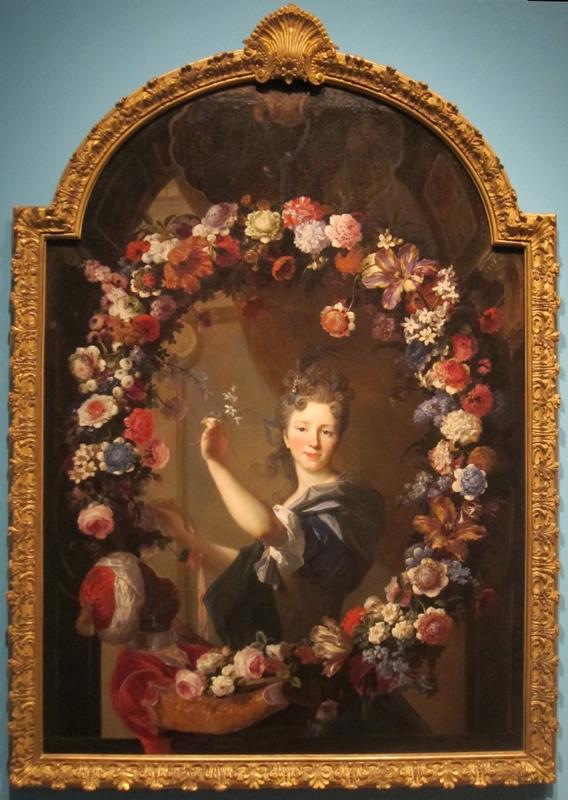More about Hélène Lambert de Thorigny

Sr. Contributor
Portrait of a lady, or Real Housewives of Imperialism?
This painting depicts a pretty white girl putting the finishing touches on a particularly heavy-looking floral wreath, held up patiently by an enslaved African page. The woman is Helene Lambert de Thorigny, pampered wife of a rich financier. The slave’s name is unknown.
Nicolas de Largilliere specialized in painting the haute bourgeoisie, wealthy middle class people with awesomely bad taste and something to prove. The African servant is treated as a decorative object, an extension of the wreath and no different than a piece of furniture, to show Madame de Thorigny’s social status. Such slaves were usually children, imported as pets or fashion accessories for bored rich ladies. This may be the literal human property of Madame, or an embellishment imagined by the artist. Largilliere was fond of this disturbing motif, using it in several of his portraits.
The painting is also notable for having two artists: Largilliere and floral painter Jean-Baptiste Belin de Fontenay. The latter is responsible for the lushly executed wreath, easily the painting’s most arresting feature next to its advertisement for slavery.
Typical of traditional critics’ whitewashing of art history, the placard beside this painting in the Honolulu Museum of Art describes its “lighthearted charm,” as the viewer is “invited into the scene to enjoy the moment’s enchantment.” One wonders if the “enchantment” is lost on the victim of human trafficking, whose arms are probably getting tired, and who will no doubt be sold to the Caribbean when he outlives his usefulness.













